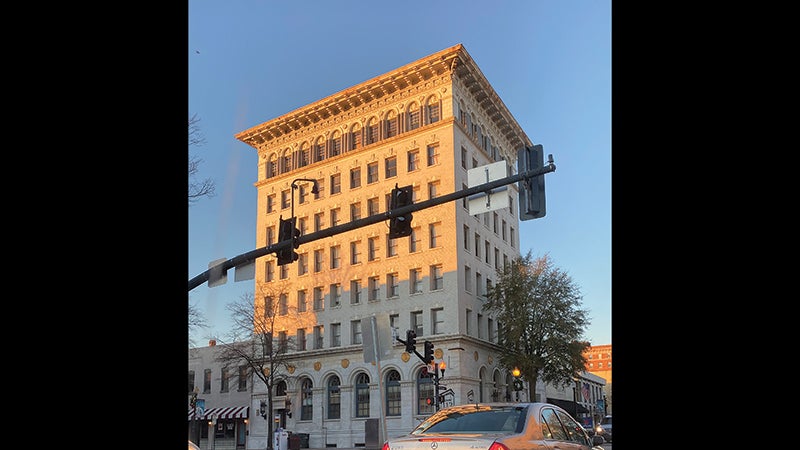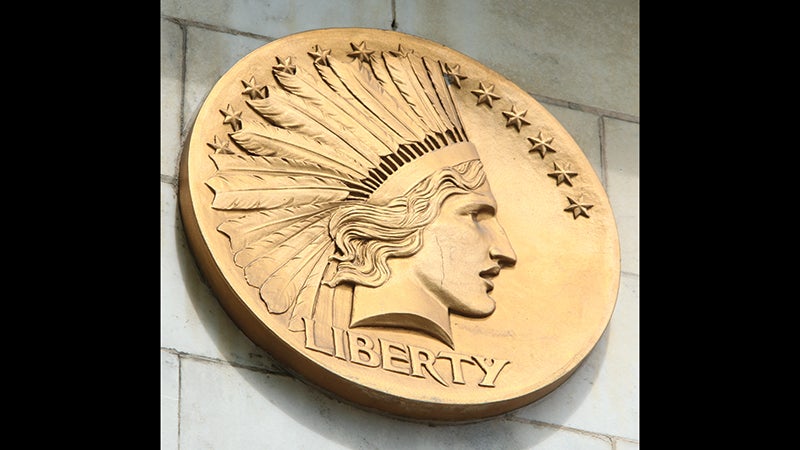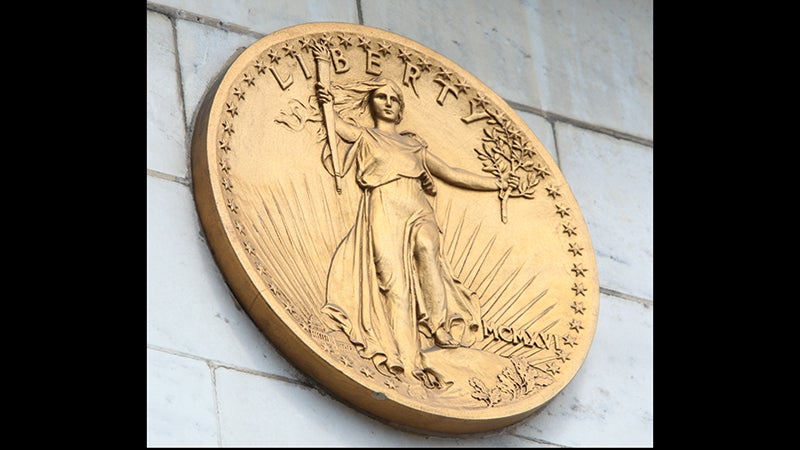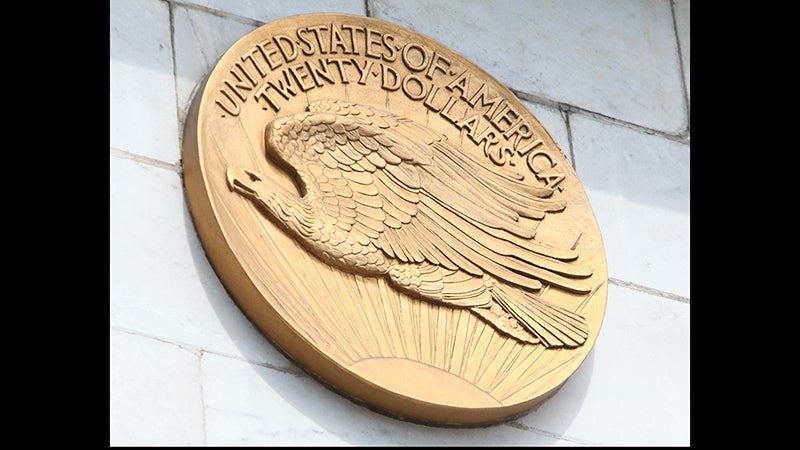Pennies from Heaven?
Published 6:15 pm Wednesday, August 26, 2020
|
Getting your Trinity Audio player ready...
|
Story by Phyllis Speidell
Photos by John H. Sheally II
Suffolk may not have showers of pennies from heaven but, for more than 100 years, downtown Suffolk has had a unique overhead display of rare coins. The little-known story of those coins is a piece of local history worth discovering.
The coins are in the heart of downtown where Tower 112 stands at the corner of Washington and Main streets. Built in 1916 as the home of National Bank, the seven-story Renaissance Revival style building features a row of replica vintage coins ringing the white façade above a rank of arched windows.
Over the decades, the building changed hands and underwent numerous remodels. From the National Bank, the building transitioned to the Virginia National Bank and then became an office building housing a collection of prominent local professionals — lawyers, accountants, real estate investors. Through every renovation, however, the gilt, terra cotta coins remained in place as they do today.
The decorative coins replicate the Saint-Gaudens Eagle and Double Eagle struck by the U.S. mint from 1907 to 1933. Considered to be among the rarest and most beautiful of U.S. coins, they have a lore of their own. The story starts before Theodore Roosevelt became U.S. president, when he and Augustus Saint-Gaudens, a rising Irish-American sculptor, struck up an acquaintance at a dinner party and became friends.
In 1901, Roosevelt, 42, was President William McKinley’s popular vice president when McKinley was assassinated, shot at close range as he shook hands with visitors at the at the Pan-American Exposition in Buffalo, N.Y. When McKinley died from his wounds a week later, Roosevelt immediately was sworn in as president.
Three years later, in 1904, Roosevelt was elected as president and commissioned Saint-Gaudens to design his inaugural medallion.
Saint-Gaudens’ creation was innovative in a number of ways. He captured a realistic, not idealized, profile of Roosevelt in his design, and then turned to Tiffany’s rather than the U.S. Mint to cast the bronze medallions. Roosevelt was delighted with the results and so impressed that he asked Saint-Gaudens to work with him on a pet project — to update and improve the design of the country’s coinage which, reportedly, Roosevelt had described as “artistically of atrocious hideousness.” The coinage may not have been that unattractive, but in Roosevelt’s eyes, it did not possess the classic beauty or flair he wanted to bolster his campaign and globally enhance the United States’ image.
At that time, the $10 gold coin, an “Eagle,” and the $20 gold coin, a “Double Eagle,” were both used in international trade and since Congress did not need to approve their re-design, Roosevelt chose them for the initial projects. There was some urgency to the project because Saint-Gaudens, in his late 50s, was not in good health.
The sculptor’s design for the $10 gold coin featured the head of the figure Liberty, wearing a Native American headdress, a distinctively Amercan touch and Roosevelt’s suggestion. The back of the coin was a side view of a standing eagle, reminiscent of the inaugural medallion. The $20 gold coin showed the Liberty figure in full stride, carrying an olive branch and a lighted torch. The obverse of the coin showed an eagle in flight.
Roosevelt was well pleased with Saint-Gaudens’s designs and the two men agreed that, with their preference for simplicity in design, the coins would not carry the “In God we trust” motto. A few years later, however, complaints from Congress and the public reversed that decision. The U.S. Mint also complained about the high relief of the design, alleging that the coins were a problem to cast, so ultimately, the relief was lowered. Both coins were released in 1907, the same year that cancer claimed Saint-Gaudens’ life.
The story of the coins took a turn in 1933 when the United States went off the gold standard. After massive bank failures during the early 1930s Great Depression, Theodore Roosevelt’s fifth cousin Franklin Roosevelt, then president of the United States, enacted a national bank moratorium to prevent further runs on banks by panicked depositors. Roosevelt’s executive order also recalled all gold coins — including the Saint-Gaudens — as well as bullion and gold certificates for a Federal Reserve reimbursement of $20.67 an ounce.
Additionally, the order halted all gold coin production and ordered the destruction of the Double Eagle coins already produced in 1933. With that order the Saint-Gaudens coins became extremely rare. According to Keith Horton, long time coin collector and Suffolk resident, there is no way to accurately estimate how many may exist today.
Horton has admired Tower 112, its architecture and replica coins for years. His appreciation for the Saint-Gaudens coins dates back his childhood when he first began collecting and grew as his coin interest escalated in the last 21 years.
“Especially in these COVID-19 days, when we have plenty of time at home, it’s a good time to check out the old banks and sock drawers for loose change,” he said. “I believe everybody ought to own a silver or gold coin because of their historical value. Those coins become a legacy item for the family, and there is no better time than now to begin collecting.”










